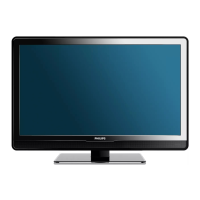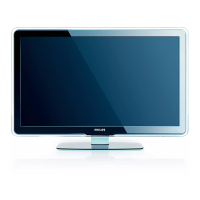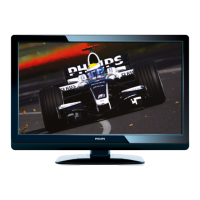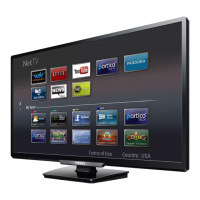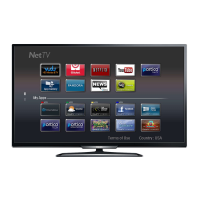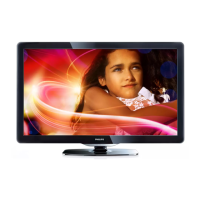
Do you have a question about the Philips 47PFL4606H and is the answer not in the manual?
| Child lock | No |
|---|---|
| Teletext function | Yes |
| Audio formats supported | MP3 |
| Image formats supported | JPEG XR |
| Video formats supported | H.264, MPEG1, MPEG2, MPEG4 |
| Operating temperature (T-T) | 5 - 35 °C |
| Package depth | 220 mm |
| Package width | 1380 mm |
| Package height | 946 mm |
| Package weight | 31800 g |
| Response time | 2 ms |
| Display diagonal | 47 \ |
| Display brightness | 400 cd/m² |
| Display technology | LCD |
| Native aspect ratio | 16:9 |
| Native refresh rate | 400 Hz |
| Supported video modes | 1080p |
| Contrast ratio (dynamic) | 100000:1 |
| Display diagonal (metric) | 119 cm |
| Screen format adjustments | 4:3, 14:9, Auto, Zoom |
| Supported graphics resolutions | 1920 x 1080 (HD 1080) |
| Motion interpolation technology | PMR (Perfect Motion Rate) |
| Tuner type | Analog & digital |
| Analog signal format system | NTSC, PAL, SECAM |
| Digital signal format system | DVB-C, DVB-T |
| HDMI ports quantity | 3 |
| SCART ports quantity | 1 |
| USB 2.0 ports quantity | USB 2.0 ports have a data transmission speed of 480 Mbps, and are backwards compatible with USB 1.1 ports. You can connect all kinds of peripheral devices to them. |
| Consumer Electronics Control (CEC) | Anynet+ |
| Product color | Black |
| Panel mounting interface | 400 x 300 mm |
| Volume control | Digital |
| Multimedia connections | USB |
| Sound enhancement technology | Auto Volume Leveller, Clear Sound, Incredible Surround, Smart Sound, Treble and Bass Control |
| RMS rated power | 20 W |
| Number of speakers | 2 |
| AC input voltage | 220 - 240 V |
| AC input frequency | 50 Hz |
| Power consumption (standby) | 0.3 W |
| Depth (with stand) | 268 mm |
|---|---|
| Width (with stand) | 1129.8 mm |
| Height (with stand) | 745.6 mm |
| Weight (with stand) | 20870 g |
| Depth (without stand) | 83 mm |
| Height (without stand) | 697.8 mm |
| Weight (without stand) | 17500 g |
Provides crucial safety precautions to prevent injury, electric shock, fire, and damage to the TV.
Details the physical buttons and controls on different Philips TV models for operation.
Guide to adjusting picture and sound preferences for optimal viewing and listening.
Detailed steps for fine-tuning individual picture parameters like contrast, brightness, and colour.
Fine-tuning sound parameters such as bass, treble, surround sound, and balance.
Accessing the on-screen guide for digital channels to view schedules and programme information.
Preventing children from viewing restricted programs or channels by locking TV controls.
Configuring the TV to display programs based on age ratings, restricting content for children.
Connecting a USB device to play media files like photos, music, and videos on the TV.
Methods for updating the TV's software to improve performance and add features.
Overview of the three ways to update TV software: USB, automatic digital broadcast, or manual digital broadcast.
Step-by-step guide for updating TV software using a USB storage device.
Manual update process for TV software via USB storage devices.
Checking for and installing software updates manually via digital broadcast signals.
Responding to automatic prompts for software updates received via digital broadcasts.
Customizing TV settings like menu language, sleep timer, location, and channel information display.
Restoring the TV to its original default picture and sound settings, excluding channel installation.
Searching and storing available TV channels automatically based on region.
Step-by-step guide for manually searching and storing analogue TV channels.
Connecting a computer to the TV for video and audio input using VGA and audio connectors.
Using HDMI 1 ARC for high-definition devices and outputting TV audio to home theatre systems.
Connecting high-definition digital devices like Blu-ray players via HDMI 2 for audio and video input.
Connecting high-definition digital devices via side HDMI port for audio and video input.
Detailed instructions for connecting a computer to the TV using HDMI, DVI, or VGA cables.
Guide on how to insert, activate, and use a CAM for accessing encrypted digital TV services.
Step-by-step procedure for safely inserting and activating a Conditional Access Module into the TV.
Utilizing HDMI-CEC features for simplified control of connected devices with the TV remote.
Enabling or disabling the Philips EasyLink feature for integrated control of HDMI-CEC devices.
Configuring TV audio output to HDMI-CEC devices or TV speakers based on EasyLink settings.
Routing TV audio output to speakers of connected EasyLink or home theatre systems.
Technical specifications including dimensions and weight for various Philips TV models.
Solutions for common TV problems like failure to switch on, remote control issues, and blinking standby lights.
Troubleshooting steps for a TV that fails to power on, involving power cable and outlet checks.
Steps to resolve remote control issues, including battery checks, insertion, and cleaning the sensor.
Resolving problems with channel lists, missing digital channels, or channels not installing automatically.
Troubleshooting common picture problems like no picture, sound with no picture, poor reception, or incorrect screen fit.
Resolving sound problems such as poor quality, no sound, or sound only from one speaker.
Addressing problems with HDMI devices, HDCP delays, device recognition, and intermittent audio disruptions.
Troubleshooting unstable computer display on the TV, checking resolution, refresh rate, and picture format.
Information on how to get further support, including FAQs, Philips Consumer Care contact details, and model/serial numbers.

